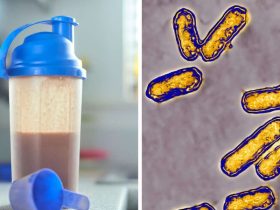Due to worries that some shellfish from Washington and Oregon may be tainted with toxins that cause paralytic shellfish poisoning, which has sickened around two dozen people so far, the U.S. Food and Drug Administration is advising eateries, food retailers, and consumers to steer clear of these particular seafood sources.
All shellfish from Willapa Bay, Washington, including oysters and bay clams collected from growth regions in Netarts and Tillamook Bays in Oregon since May 28 are among the vulnerable seafood.
As of the end of May, the FDA has identified Stony Point, Bay Center, and Bruceport as additional sites of concern in Washington.
In addition to those states, shellfish from those regions were also distributed to Arizona, California, Colorado, Hawaii, Nevada, and New York.
PSP, or paralytic shellfish toxins, are the most prevalent and serious type of shellfish poisoning. They are produced naturally by sea algae known as phytoplankton and are classified as neurotoxins.
After consuming this algae, molluscan shellfish have varying amounts of time to rid themselves of the poison; some eliminate it quickly, while others take longer. According to the FDA, this increases the amount of time that they provide a risk to human consumption.
The shellfish cannot have its poisons eliminated by cooking or freezing after it has been harvested.
The FDA cautions customers to be on the lookout for PSP symptoms, which often manifest within 30 minutes after consuming shellfish, even though they may seem, smell, and taste normal.
Read Also: Six Sent to Hospital by ‘Microdosing’ Chocolate Bars: FDA Issues Warning
According to the FDA, symptoms of PSP intoxication can include floating, tingling in the mouth, respiratory paralysis, limb numbness, “pins and needles” sensations, vomiting, and more.
Although there isn’t a cure, hydration therapy and respiratory support are available forms of treatment.
Those who live for 24 hours following ingestion are thought to have a favorable prognosis and no long-term negative effects. But those who pass away from high PSP levels typically do so via asphyxiation, which results in paralysis of the respiratory system.
According to the Oregon Health Authority, at least 20 persons in the state have contracted PSP as a result of the outbreak, and some of them were hospitalized. However, other reports suggest that the actual number is closer to 31.
According to OHA, the confirmed illnesses were found in individuals who had reported collecting mussels recreationally in Oregon. A representative from the state’s Fish and Wildlife Department stated that the “unprecedented levels” of PSP toxins were caused by a “very large” algal bloom.
Since then, authorities in Oregon have banned recreational shellfish harvesting throughout the entire coastline. In Washington, although no illnesses have been linked to the outbreak, the high levels of toxins have forced the closure of Grays Harbor and Willapa Bay to harvesting.
According to the National Oceanic and Atmospheric Administration, “many factors are known to contribute to harmful algal blooms, but how those factors come together to create the bloo” is not well understood.
The organization notes that human activity upsetting ecosystems is one factor in why they’re happening more frequently and in areas that weren’t previously affected by climate change and rising nutrient pollution.












Leave a Reply